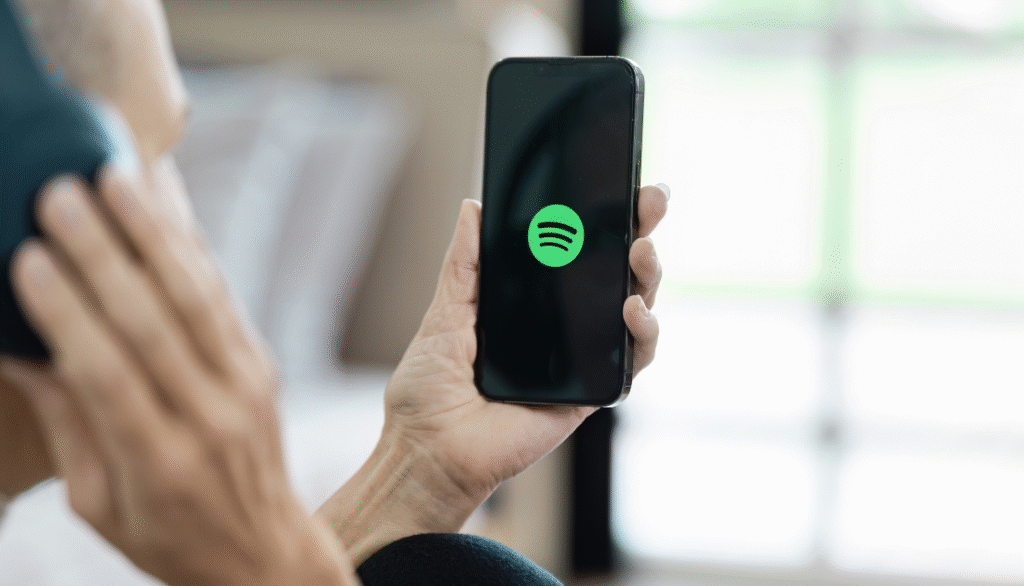For years, Spotify users have shared tracks and podcasts by sending links through apps like WhatsApp, Instagram, or Snapchat. With the launch of in-app messaging, Spotify is moving those conversations inside its own platform.
Highlights
- Built-In Conversations: Users can now chat inside Spotify, keeping songs, podcasts, and playlists accessible within the thread instead of lost in old links.
- Who You Can Chat With: At launch, limited to people you’ve already collaborated with (blends, jams, playlists) and Family/Duo members; new chats require approval.
- Privacy & Safety: Messages are encrypted in transit and at rest, but not end-to-end. Spotify can scan for policy violations, and users can report chats.
- Feature Set: New “Messages” section, emoji reactions, shared history storage, and mobile-only availability at launch.
- Rollout: Starting in Latin America and South America, expanding soon to the U.S., Canada, EU, U.K., Brazil, Australia, and New Zealand for users 16+.
- Social Push: Builds on podcast comments (2023) and a video-first redesign (2024–25). Messaging is part of Spotify’s broader shift toward interactive features.
- User Control: Critics worry about clutter, but users can disable messages via Settings → Privacy and Social → Disable Messages.
- Strategic Value: Chats feed Spotify’s recommendation algorithms and help drive social discovery, viral loops, and engagement—key to competing with TikTok-like platforms.
- Second Attempt: Spotify shut down messaging in 2017, but with 696M monthly active users in 2025, the relaunch has a much larger base for success.
The feature also addresses a common pain point: history. Songs, episodes, or playlists shared in chat will remain accessible within the conversation, removing the need to search through old links.
How Messaging Works
At launch, Spotify messaging is limited to one-on-one conversations with clear contact rules:
- Users you have previously shared content with through blends, jams, or collaborative playlists.
- Members of your Family or Duo plan.
To start a chat, a request must be sent and approved by the recipient.
Integration Beyond Spotify
External sharing remains supported. If someone sends a Spotify link via apps like Instagram, Facebook, WhatsApp, or Snapchat, tapping the link allows the recipient to approve a chat request. Users can also share invite links with contacts who are not already connected.
Features at Launch
- Conversations appear under a new Messages section, accessible from profile pictures on mobile.
- Emoji reactions are supported for individual messages.
- Shared tracks, podcasts, and chat history remain stored within the conversation thread.
Privacy and Safety
Spotify states that messages are encrypted at rest and in transit but not end-to-end encrypted. Unlike platforms such as WhatsApp or Signal, Spotify retains the ability to scan messages proactively for policy violations.
Users can report conversations, which will be reviewed under Spotify’s community guidelines and terms of service.
A Social Strategy
Messaging builds on Spotify’s gradual shift toward more interactive features:
- 2023 – Comments on podcasts.
- 2024–25 – A redesigned, video-first feed and early experiments with music track comments.
Chief Product and Technology Officer Gustav Söderström has previously suggested Spotify’s mobile app would become “much more interactive.” Messaging marks a significant step in that direction.
Rollout Plan
- Initially available to premium and free users aged 16+ in select Latin American and South American markets.
- Expansion to the U.S., Canada, Brazil, the EU, the U.K., Australia, and New Zealand in the coming weeks.
- Available on mobile only at launch.
Balancing Adoption and User Fatigue
While some listeners may welcome in-app chat, others have expressed concern about Spotify becoming cluttered with too many features. Critics argue the interface is already complex and harder to navigate compared to competitors.
For users who prefer to keep Spotify focused on playback, there is an opt-out option:
Settings → Privacy and Social → Disable Messages.
A Relaunch with Broader Reach
Spotify previously experimented with messaging but discontinued it in 2017 due to low engagement. This time, the company is betting on scale: with 696 million monthly active users as of Q2 2025, the feature has a larger base to succeed.
Beyond convenience, messaging also supports Spotify’s recommendation systems. Every message, reaction, and shared track provides signals that can refine discovery algorithms.
Analysts see this as part of a larger push into social-driven audio discovery, a segment expected to grow steadily through 2030.
Spotify also frames messaging as a way to “drive hype”—creating moments of shared listening and engagement that can amplify playlists, boost following activity, and foster viral loops, echoing the success of platforms like TikTok.


